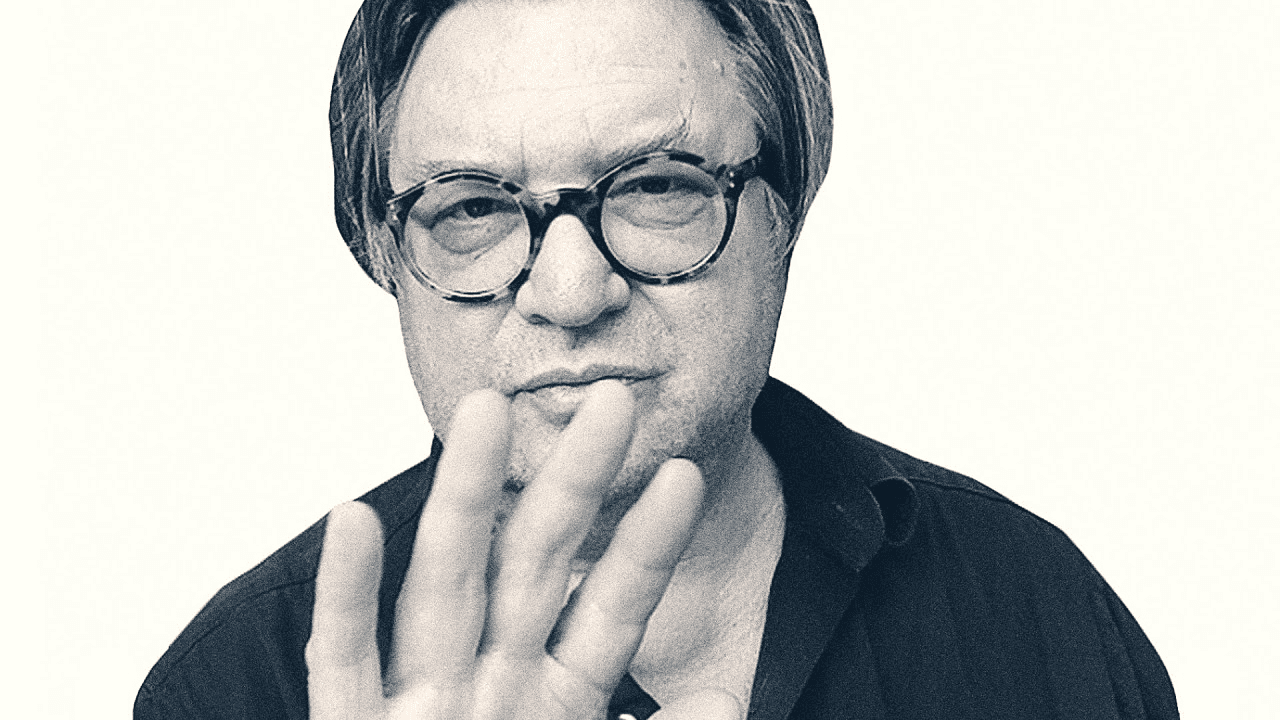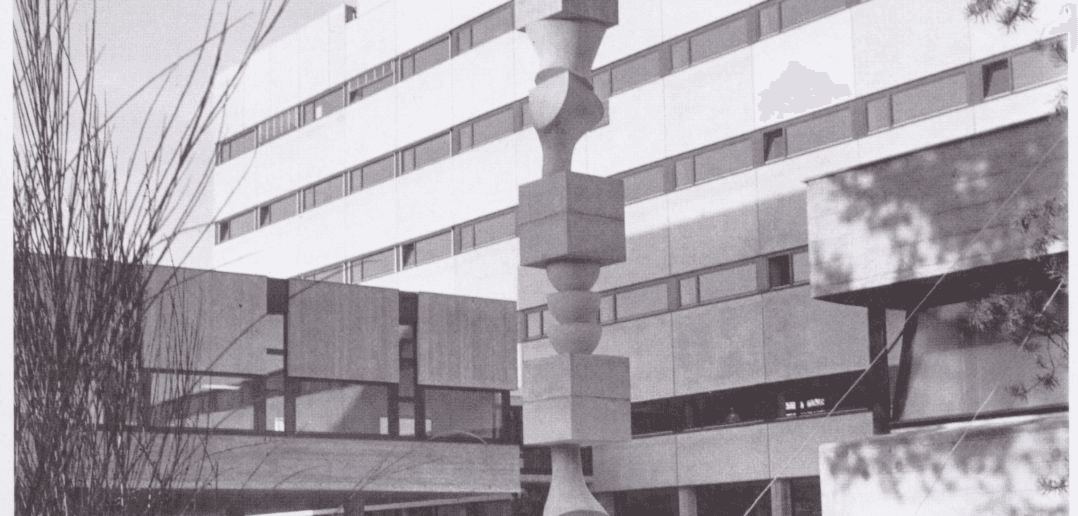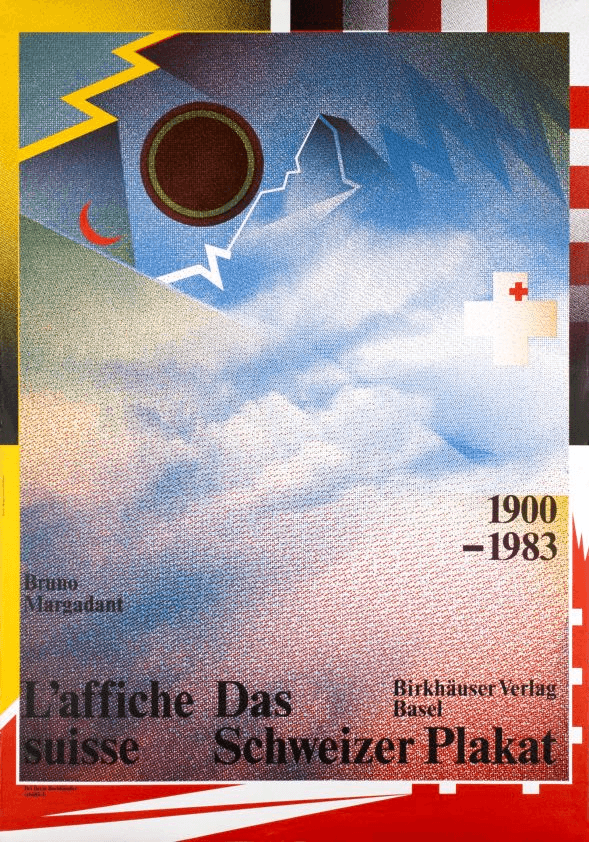
Wolfgart Weingart
Essay
How did Wolfgang Weingart become the ‘Father’ of New Wave Typography?
Introduction
Who is Wolfgang Weingart? What is New Wave Typography? Why was Weingart named the ‘father’ of New Wave Typography?
These are the topics you will read and learn about on this webpage. We will explore Wolfgang's life, from beginning to the end, while searching for answers to the firstly listed question.
We will focus on the detail and evidence leading us up to answering the main question.
Why was Weingart named the ‘father’ of New Wave Typography?
You will read original Wolfgang quotes and images showcasing his famous works that changed the view on design and began a new wave of design principles & structure.
Wolf
Gang
Who was Wolfgang Weingart?
Wolfgang Weingart, born in 6th february 1941, was a well known german typographer and graphic designer who specialized in Swiss typography, who was also later in his life named the ‘father’ of the New wave typography and became popular on an international scale.
In 1958 Wolfgang returned to Germany and began to further expand his education as he joined Merz Academy, Stuttgart for a 2 year course for applied graphic arts, where Wolfgang began to learn and understand woodstock printing and typesetting throughout his time in Merz Academy.
Later after successfully passing the course, Wolfgang attended a 3 year apprenticeship programme at Ruwe Printing, learning the techniques and skills of handling hot metal with hands.
This extra experience in various art fields, allowed Wolfgang to open up to new techniques, ideas and outlook on art. Wolfgang took a huge step when agreeing to teaching and lecturing about his work in Typography in ‘’Kunstgewerbeschule’’ school for vocational arts 1968.
In 1958 Wolfgang returned to Germany and began to further expand his education as he joined Merz Academy, Stuttgart for a 2 year course for applied graphic arts, where Wolfgang began to learn and understand woodstock printing and typesetting throughout his time in Merz Academy.
Later after successfully passing the course, Wolfgang attended a 3 year apprenticeship programme at Ruwe Printing, learning the techniques and skills of handling hot metal with hands.
This extra experience in various art fields, allowed Wolfgang to open up to new techniques, ideas and outlook on art. Wolfgang took a huge step when agreeing to teaching and lecturing about his work in Typography in ‘’Kunstgewerbeschule’’ school for vocational arts 1968.
There are many important factors that happened throughout the years for Wolfgang Weingart to be named the ‘’Father’’ of New Wave Typography. Wolfgang had to experiment with his arts and style, influence his students and many designers, but also meet significantly important people throughout his lifetime to make it all happen and work on a scale it reached and is seen today. Wolfgang stated that he personally was not even trying to create a new style, it is the people he influenced that spread the idea around, mostly the students from Basel school of design.
‘’I took Swiss Typography as my starting point but then I blew it apart, never forcing any style upon my students. I never intended to create a style. It just happened that the students picked up and mis-interpreted a so called ‘Weingart Style’ and spread it around’’
-Wolfgang Weingart (Design history)
-Wolfgang Weingart (Design history)

Wolfgang & Schools
Armin Hoffman (Wolfgang’s friend) was surrounded by designers that supposedly did not focus as much on using Swiss-style in their art and were fully dedicated to the artistic principles.This has clearly influenced Weingart at one point in his career. Since Wolfgang and Armin were close to knowing each other, it has certainly helped Wolfgang broaden his visions on art and his personal style.
Steadily the word began to spread about this new style and outlook on art, due to the fact that Weingart has been touring and lecturing designers all across the globe, heavily in Europe, but also in Japan, New Zealand and Australia.
Steadily the word began to spread about this new style and outlook on art, due to the fact that Weingart has been touring and lecturing designers all across the globe, heavily in Europe, but also in Japan, New Zealand and Australia.
Wolfgang taught and did lecture tours in the 1970s, in Basel school of design. There, he was exposed to many of his American students and other graphic designers who decided to visit his lecture tour, although the American students played a huge part in the success of New Wave’s popularity.
The students were truly inspired by Weingartz style and took it back into the states, where they further developed the style and made it into commercial success in the USA. These students were called ‘’April Greiman’’ and ‘’Dan Friedman’’. Bringing the style into the states was a huge advantage for the New Wave, as it began spreading the word all around the globe, becoming one huge solid movement.
Even though Weingart has retired from his career, he is still active in teaching at Basel’s School of Design summer programs, mainly focusing on teaching typography.
The students were truly inspired by Weingartz style and took it back into the states, where they further developed the style and made it into commercial success in the USA. These students were called ‘’April Greiman’’ and ‘’Dan Friedman’’. Bringing the style into the states was a huge advantage for the New Wave, as it began spreading the word all around the globe, becoming one huge solid movement.
Even though Weingart has retired from his career, he is still active in teaching at Basel’s School of Design summer programs, mainly focusing on teaching typography.
Wolfgang Weingart began experimenting with his arts in a specifically interesting way that would later become revolutionary in the design world, affecting the designers in the New Wave and future generations to come.
Using techniques inspired by the Dadaists, Wolfgang used collages made from paper or transparent films, this allowed Wolfgang to achieve new patterns and textures in his designs. Collages would then have added layers on top of the patterns and color, creating unusual textures and tones. This experimentation has led the New Wave designers to follow similar techniques used by Wolfgang to revolutionize the art world, and to begin to create chaotic pieces, totally opposite to Swiss-style conventions.
Traditional Swiss style designs have been mainly heavily focused on allowable / restricted set functions in design, whereas Weingart had many typographic elements that had realistic functions in his typographic work.
It is stated that Weingart was interested in the overall qualities of typography, asking how much they can be pushed and changed, while still retaining the core value and meaning before it is totally remodeled.
Using techniques inspired by the Dadaists, Wolfgang used collages made from paper or transparent films, this allowed Wolfgang to achieve new patterns and textures in his designs. Collages would then have added layers on top of the patterns and color, creating unusual textures and tones. This experimentation has led the New Wave designers to follow similar techniques used by Wolfgang to revolutionize the art world, and to begin to create chaotic pieces, totally opposite to Swiss-style conventions.
Traditional Swiss style designs have been mainly heavily focused on allowable / restricted set functions in design, whereas Weingart had many typographic elements that had realistic functions in his typographic work.
It is stated that Weingart was interested in the overall qualities of typography, asking how much they can be pushed and changed, while still retaining the core value and meaning before it is totally remodeled.

(Affiche das Schweizer Plakat, 1984, Matterhorn, Wolfgang Weingart)
“When I began teaching in 1968, classical, so-called "Swiss typography" (dating from the 1950s), was still commonly practiced by designers throughout Switzerland and at our school. Its conservative design dogma and strict limitations stifled my playful, inquisitive, experimental temperament and I reacted strongly against it. Yet at the same time I recognized too many good qualities in Swiss typography to renounce it altogether. Through my teaching I set out to use the positive qualities of Swiss typography as a base from which to pursue radically new typographic frontiers.”
(Wikipedia 2022, Wolfgang Weingart)
(Wikipedia 2022, Wolfgang Weingart)
Swiss typography was ruling the design world in the 70s and before, many artists were not satisfied with its strict design conventions and the limited availability to express themselves. This certainly had a positive effect on the attention Wolfgang would receive through his chaotic posters, breaking the limitations set by the International Typographic styles.
The assets in designs could be placed anywhere the artist desired, ignoring the grid structures, which has set the designers to feel freedom and the ability to use different techniques, allowing designers to express themselves.
According to Chriskeno’s blog (Chriskeno, Wolfgart Weingart), Weingart’s students were taught how to use a different format of design, breaking away from many Swiss typographic fundamentals although still leaving some basics. Weingart taught students things, such as;
The assets in designs could be placed anywhere the artist desired, ignoring the grid structures, which has set the designers to feel freedom and the ability to use different techniques, allowing designers to express themselves.
According to Chriskeno’s blog (Chriskeno, Wolfgart Weingart), Weingart’s students were taught how to use a different format of design, breaking away from many Swiss typographic fundamentals although still leaving some basics. Weingart taught students things, such as;
This has certainly opened a different perspective on creation of art for young students, as it began to defy the strict conventions set by the International Typographic style. Having a school class that is willing to look at the perspective of art with an open mind, and listen to a popular creative artist, has certainly affected New Wave’s designers to rise in numbers and continue the legacy. The more designers were exposed to it, the larger the movement grew.
Conclusion
References
Wolfgang Weingart early life -
https://en.wikipedia.org/wiki/Wolfgang_Weingart#cite_note-5
New Wave Research -
https://chriskeno.github.io/wolfgang-weingart-essay/wolfgang-weingart-essay.html#New-Wave
New Wave Typography -
http://www.designhistory.org/PostModern_pages/NewWave.html
Affiche das Schweizer Plakat, poster:
http://scott-mcnab.github.io/Essay/
Wolfgart Weingart image thumbnail:
https://www.youtube.com/watch?v=WA5CYRrd8qo
It is clear that Wolfgang Weingart was the father of New Wave typography. Although I strongly believe that many sources had to add in their own elements and importance to make it as successful and known as it is seen and heard today.
Through self development and finding new artistic approaches, to inspiring young American students, and students across the globe, who would then spread the word and follow the style, making it a commercial success in the states and many other cities across the globe that have been touched by Weingartz lectures. This has all led up to the development, rise and movement of the New Wave Typography.
Of course none of it would have the same impact without Weingartz involvement and unique approach to react to the International Typographic style with chaotic and expressive designs.
I also believe that the style had such a large impact due to its freshness. The designers were exposed to similar design styles and conventions for a long time, so when the designers were exposed to the new conventions such as
Through self development and finding new artistic approaches, to inspiring young American students, and students across the globe, who would then spread the word and follow the style, making it a commercial success in the states and many other cities across the globe that have been touched by Weingartz lectures. This has all led up to the development, rise and movement of the New Wave Typography.
Of course none of it would have the same impact without Weingartz involvement and unique approach to react to the International Typographic style with chaotic and expressive designs.
I also believe that the style had such a large impact due to its freshness. The designers were exposed to similar design styles and conventions for a long time, so when the designers were exposed to the new conventions such as
-chaotic designs
-using lack of grid structures
-different font / wording weights in singular words
-unusual textures and tones
-using lack of grid structures
-different font / wording weights in singular words
-unusual textures and tones
The designers were simply blown away and attracted to it quite instantly as it was something extraordinary for them and new, breaking away from the everyday seen art.
Wolfgang Weingartz work was different during that time period, and it lit a spark in designers throughout the entire globe. Leading him to being named the ‘’Father’’ of the New Wave Typography.
Wolfgang Weingartz work was different during that time period, and it lit a spark in designers throughout the entire globe. Leading him to being named the ‘’Father’’ of the New Wave Typography.
Use of different font weights within single words
Inconsistent spacing between letters
Assets / Type sets presented in non right angles
Inconsistent spacing between letters
Assets / Type sets presented in non right angles